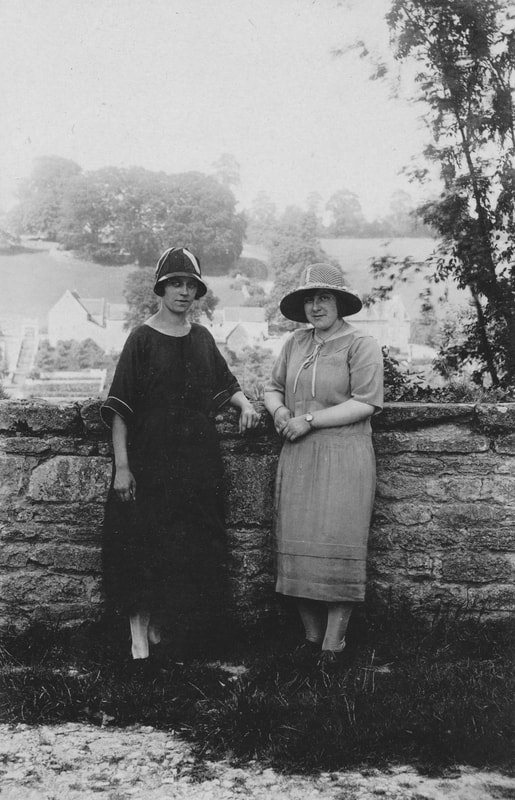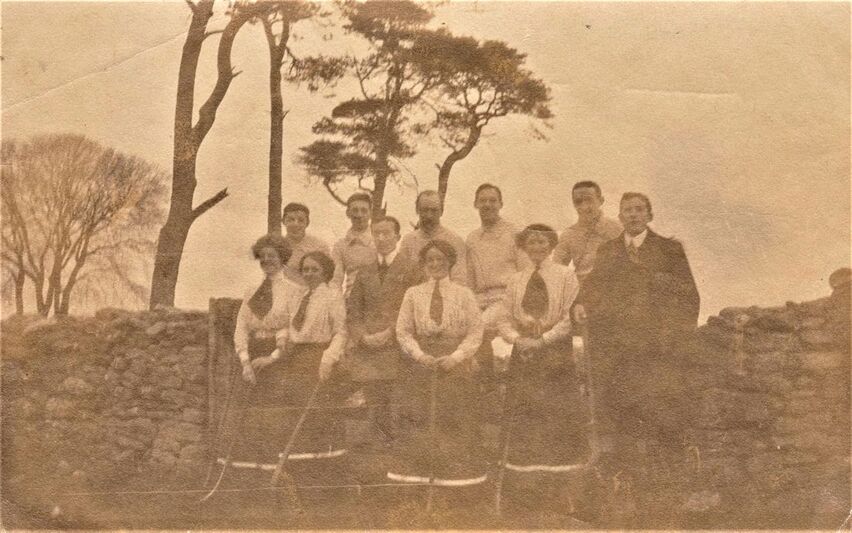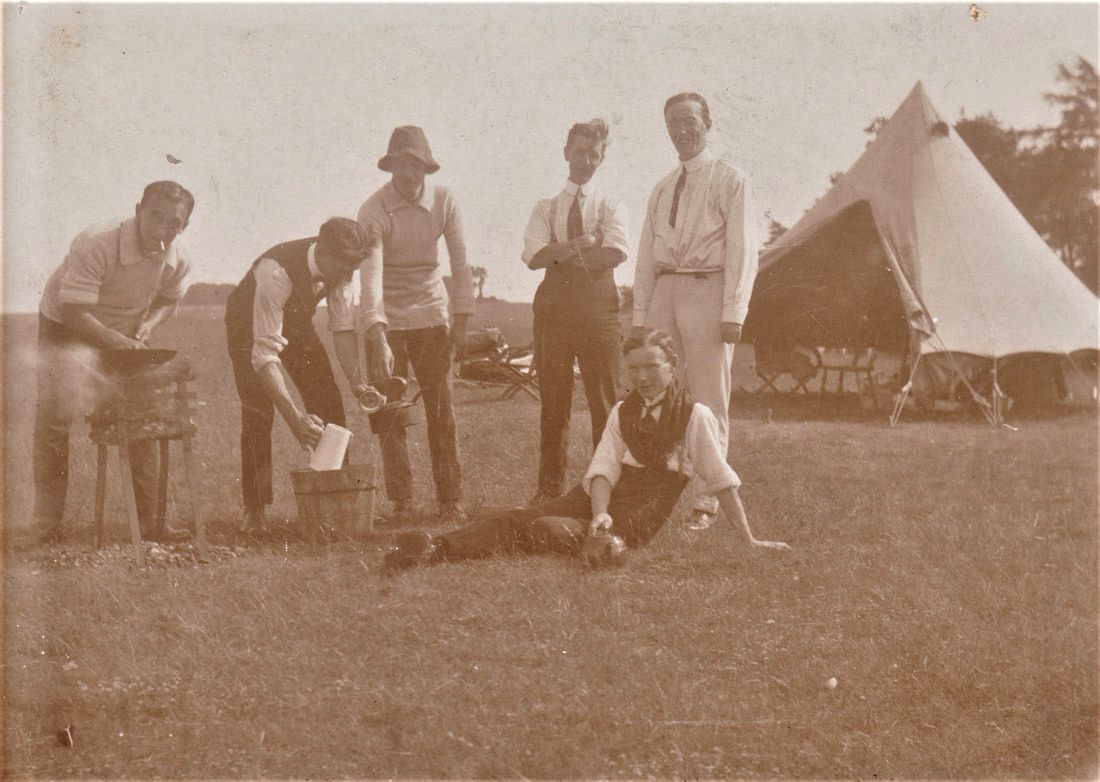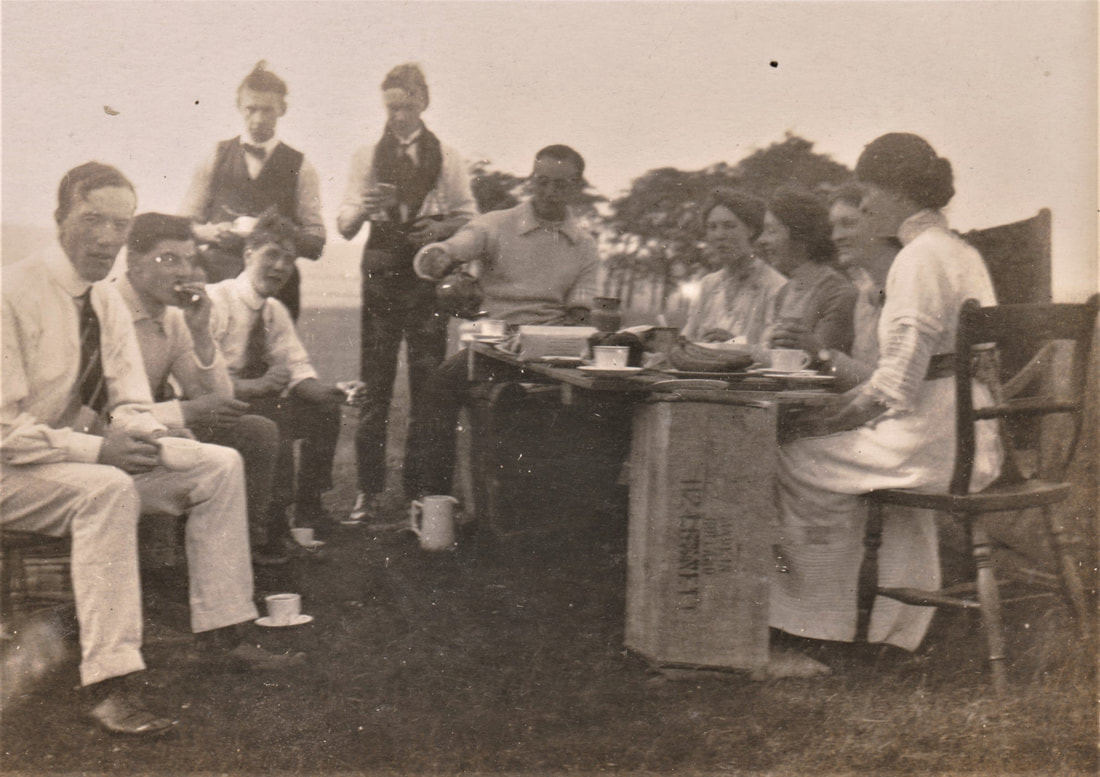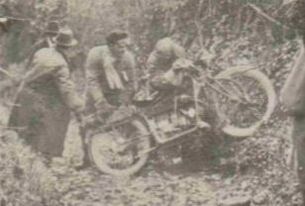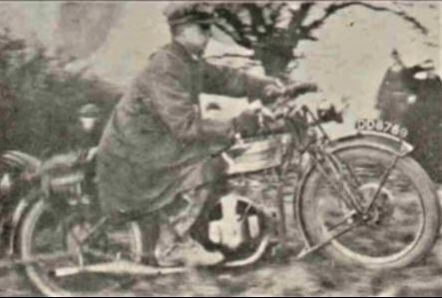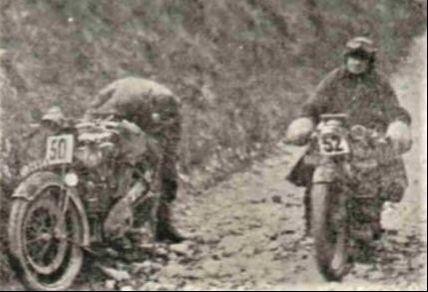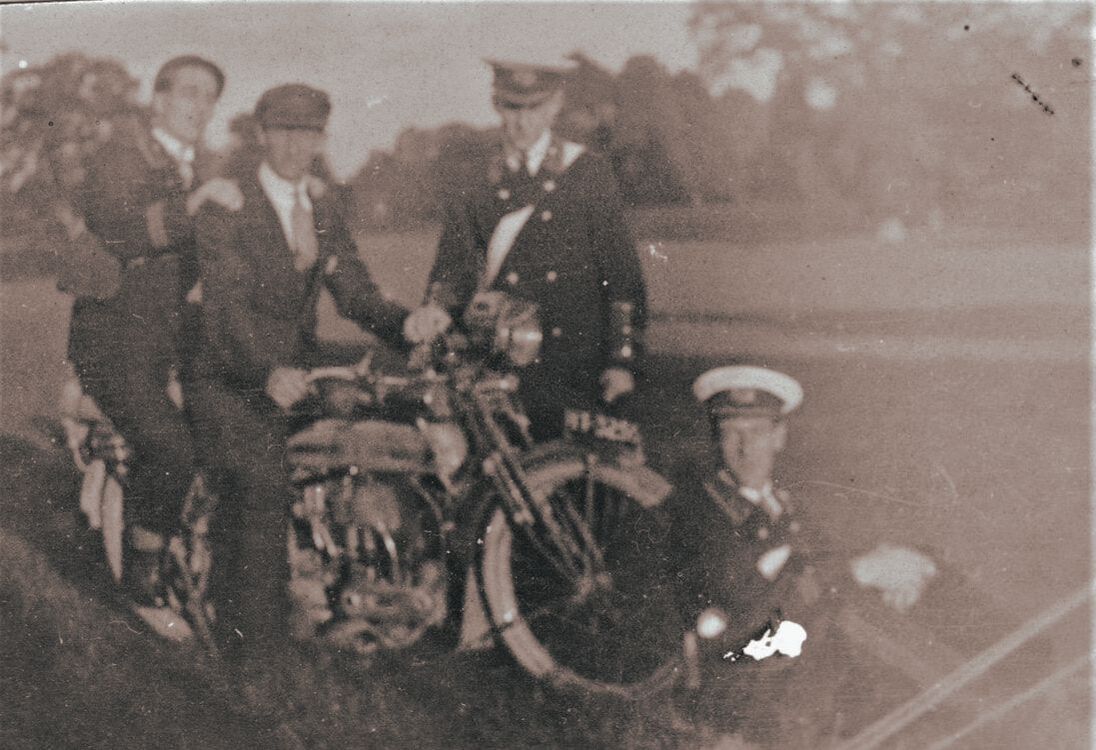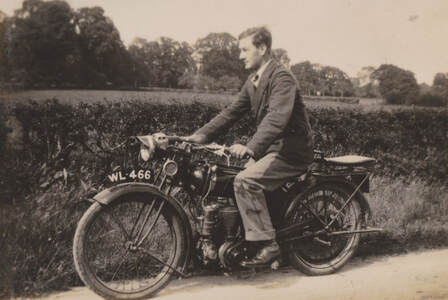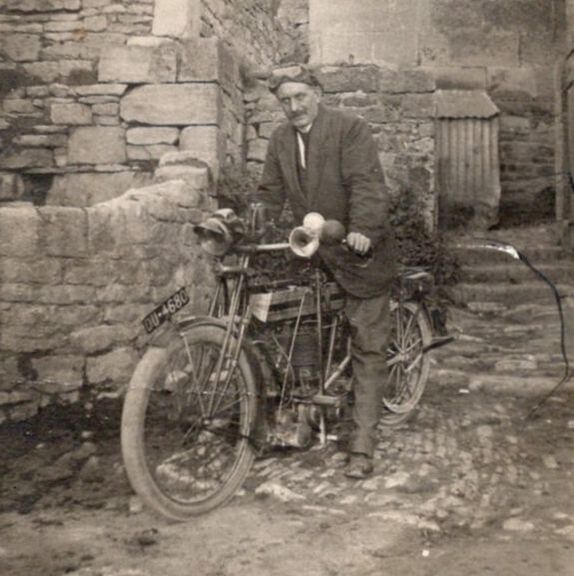|
Roaring Twenties
Alan Payne March 2022 The 1920s exposed some of the deep divisions in English society. On one side was the Great Gatsby culture of young people with purchasing power and time to enjoy life; on the other, the level of financial and social deprivation endured by many which led to the General Strike of 1926. These inequalities reflected many years of divisions in wealth and opportunity in Britain, some of which have not been addressed in our modern world. This article focuses on the flapper generation and especially the attitudes of those young people who lived in Box. We are fortunate that many people had access to photography without the limits of late Victorian studio portraits. This enables us to experience their lives in a direct and informative way. The name flapper had existed for centuries. It had originally meant a prostitute and young women took up this connotation, deliberately wishing to shock the older generations still rooted in the Victorian class system. Sexual freedom was expressed by young women wearing short skirts, make up and a moral permissiveness that included smoking in public and drinking alcohol, even in Box village. |
High Society
Only a few people had the wealth to enjoy the sort of exciting but decadent adventures recorded by F Scott Fitzgerald in the Gatsby novel but young people in Box wanted to experience a similar idealistic existence, emancipated by freedom from their elders. By and large those born after 1900 had been too young for the war and wanted to escape from the horrors their elders experienced. It may be that PG Wodehouse recalled some of his childhood time at Cheney Court, Box, in his depiction of Bertie Wooster, Jeeves and Blandings Castle in his novels. Talking to his valet, Jeeves, he has a variety of naïve, idealistic quotes bordering on irresponsibility: I cannot do with any more education Jeeves! I was full up years ago; Send a telegram cancelling that last telegram; You can't be a successful dictator and design women's underclothing.
Hilda Ernestine Galton and Ruth Sarah Maud Peto lived at Kingsmoor House, The Ley, for a few years between 1915 and 1922, during and after the Great War. They were both extremely wealthy heiresses, Hilda came from a Birmingham banking family who owned Hadzor House near Droitwich and Ruth was related to the owners of Iford Manor, their money originating from railway developers during the Crimean War. The young women appear to have started a relationship as a couple shletering from adverse publicity in Box. They adopted children (probably unofficially) In 1920 they advertised for a nursemaid or children’s nurse required immediately to help with five children with whooping cough.[1]
Only a few people had the wealth to enjoy the sort of exciting but decadent adventures recorded by F Scott Fitzgerald in the Gatsby novel but young people in Box wanted to experience a similar idealistic existence, emancipated by freedom from their elders. By and large those born after 1900 had been too young for the war and wanted to escape from the horrors their elders experienced. It may be that PG Wodehouse recalled some of his childhood time at Cheney Court, Box, in his depiction of Bertie Wooster, Jeeves and Blandings Castle in his novels. Talking to his valet, Jeeves, he has a variety of naïve, idealistic quotes bordering on irresponsibility: I cannot do with any more education Jeeves! I was full up years ago; Send a telegram cancelling that last telegram; You can't be a successful dictator and design women's underclothing.
Hilda Ernestine Galton and Ruth Sarah Maud Peto lived at Kingsmoor House, The Ley, for a few years between 1915 and 1922, during and after the Great War. They were both extremely wealthy heiresses, Hilda came from a Birmingham banking family who owned Hadzor House near Droitwich and Ruth was related to the owners of Iford Manor, their money originating from railway developers during the Crimean War. The young women appear to have started a relationship as a couple shletering from adverse publicity in Box. They adopted children (probably unofficially) In 1920 they advertised for a nursemaid or children’s nurse required immediately to help with five children with whooping cough.[1]
Adventures to Kingsdown
The adventures most young people experienced in Box were less exciting than Bertie Wooster’s but similar in intention. This photo shows the Box Hockey team at Totney, Kingsdown. It was probably taken in the years just before the First World War as it includes James Browning and his wife-to-be Gertie Allen as teenagers. We don’t know if they played on the Downs or if it was just a meeting place. Most teams at this time were single-sex, so it may have been just an informal meeting of friends.
Totney was a popular location for outings of younger people because it could be reached quite easily on foot, with handcarts or small carriages conveying the equipment needed. It was ideal for inexpensive camping trips and, bearing in mind the morality of those days, an opportunity for young men and women to get to know each other without parental supervision.
The adventures most young people experienced in Box were less exciting than Bertie Wooster’s but similar in intention. This photo shows the Box Hockey team at Totney, Kingsdown. It was probably taken in the years just before the First World War as it includes James Browning and his wife-to-be Gertie Allen as teenagers. We don’t know if they played on the Downs or if it was just a meeting place. Most teams at this time were single-sex, so it may have been just an informal meeting of friends.
Totney was a popular location for outings of younger people because it could be reached quite easily on foot, with handcarts or small carriages conveying the equipment needed. It was ideal for inexpensive camping trips and, bearing in mind the morality of those days, an opportunity for young men and women to get to know each other without parental supervision.
These photos show young people camping on Kingsdown somewhere near Totney Firs. The people shown include James White Browning, Bill Bascombe,
Mr McIlwraith, Ted Richards and young Lambert children (photos courtesy Margaret Wakefield, Jim Browning and Ann Pothecary (nee Browning))
Mr McIlwraith, Ted Richards and young Lambert children (photos courtesy Margaret Wakefield, Jim Browning and Ann Pothecary (nee Browning))
Motor Bikes Rally
Of course, the excitement of challenging the attitudes of your parents wasn't limited to women and men found their outlet through the thrill of travel and adventure. In the 1920s there were far more motor-cycles than private cars, allowing people to visit surrounding areas and to race their bikes at speed. Motor bike scrambles and long-distance road races were a new and exciting challenge. Sometimes the races were based on the measurement of the 100 miles separating the Bear Inn to Hyde Park Corner but usually off-road and minor routes were sought.
Of course, the excitement of challenging the attitudes of your parents wasn't limited to women and men found their outlet through the thrill of travel and adventure. In the 1920s there were far more motor-cycles than private cars, allowing people to visit surrounding areas and to race their bikes at speed. Motor bike scrambles and long-distance road races were a new and exciting challenge. Sometimes the races were based on the measurement of the 100 miles separating the Bear Inn to Hyde Park Corner but usually off-road and minor routes were sought.
Kingsdown resident Victor Painter remembered the origin of the motor bike trials:
Now of the Motor Bike trials up the top road past the well-known Swan Inn. The starting point was by Victory Cottage and one half of mile was to Gridiron Farm. The first trial was carried out in the summer time 1921. It was mostly young men that had served in the 1914 to 1918 to 1919 war and the top rider was Bath’s Victor Anstie (seen standing on the saddle, right) who had set up a Motor Bike Garage. The trial was carried out on about four years running and crowds of people came to watch.
One young Kingsdown lad rode his own motor bike and got good marks. He was the son of the village shop owner, baker and postmaster for Kingsdown. John Brooke was his name. One boy Stan Ford had the toe cap taken off his boot standing too close at the corner below the Swan. And that very corner below the Swan Inn was always called the White Wall.
Now of the Motor Bike trials up the top road past the well-known Swan Inn. The starting point was by Victory Cottage and one half of mile was to Gridiron Farm. The first trial was carried out in the summer time 1921. It was mostly young men that had served in the 1914 to 1918 to 1919 war and the top rider was Bath’s Victor Anstie (seen standing on the saddle, right) who had set up a Motor Bike Garage. The trial was carried out on about four years running and crowds of people came to watch.
One young Kingsdown lad rode his own motor bike and got good marks. He was the son of the village shop owner, baker and postmaster for Kingsdown. John Brooke was his name. One boy Stan Ford had the toe cap taken off his boot standing too close at the corner below the Swan. And that very corner below the Swan Inn was always called the White Wall.
|
Kathleen Harris remembered the excitement of the event: Once every year the Old Jockey children had a grandstand view of some motorbike trials. The riders came from the Kingsdown direction, passed right below our vantage point and continued down Short Hill and then up to Wadswick. Their speeds would not merit a second glance now, but then we thought these young men such dare-devils as they whizzed by. The scramble held in 1926 was organised by the Bath Motor Club for the Wessex area and attracted the attention of the local press (seen right). It included motorbikes with a power of up to 4 horsepower (sic), Douglas solo bikes and sidecar riders. Twenty-three competitors set off at 2.30pm from the Northey Arms, taking six minutes to get to Kingsdown Lane. The local newspaper reported the riding conditions: This hill has a very rough surface, covered with big stones and should repay a visit for today’s event.[2] Two circuits of the route were organised starting at the Northey Arms pub, then going up Kingsdown Lane, to Blue Vein, Wadswick Lane Rudloe Hill, Biddestone Lane and finishing at Ashley Staircase. The whole took three hours. |
Left: AE Hill stuck at Blue Vein; Centre: CH King at Ashley Staircase; Right: AE Hill and HE King at Kingsdown Lane
The motor cycle craze wasn’t limited to racing enthusiasts. For many people, it became the only personal method of transport to get to work and for longer outings. It affected ever village and town and became common on Box roads because the vehicles were cheaper than cars and fiercely patriotic with several British manufacturers.
Top Left: Thomas Rawlings seated right (courtesy Stella Clarke)
Bottom Left: Gilbert Sawyer in 1930s (courtesy Hugh Sawyer). The number plate WL 466 was issued before 1932
Right: Arthur Paul Brooke at Kingsdown also before 1932 (courtesy John Brooke Flashman)
Bottom Left: Gilbert Sawyer in 1930s (courtesy Hugh Sawyer). The number plate WL 466 was issued before 1932
Right: Arthur Paul Brooke at Kingsdown also before 1932 (courtesy John Brooke Flashman)
Conclusion
It is one of the enduring anomolies of the interwar period that it was a most exciting time to be young whilst the potential of personal economic disaster was always looming. Many aspects of modern life evolved at this time, including fast fashion and personal mobility. But it remains that these photographs now look outdated and rather irrelevant. The so-called Roaring Twenties disappeared as quickly as the later Swinging Sixties.
It is one of the enduring anomolies of the interwar period that it was a most exciting time to be young whilst the potential of personal economic disaster was always looming. Many aspects of modern life evolved at this time, including fast fashion and personal mobility. But it remains that these photographs now look outdated and rather irrelevant. The so-called Roaring Twenties disappeared as quickly as the later Swinging Sixties.
References
[1] The Western Gazette, 27 August 1920
[2] Bath Chronicle and Herald, 13 March 1926
[1] The Western Gazette, 27 August 1920
[2] Bath Chronicle and Herald, 13 March 1926
